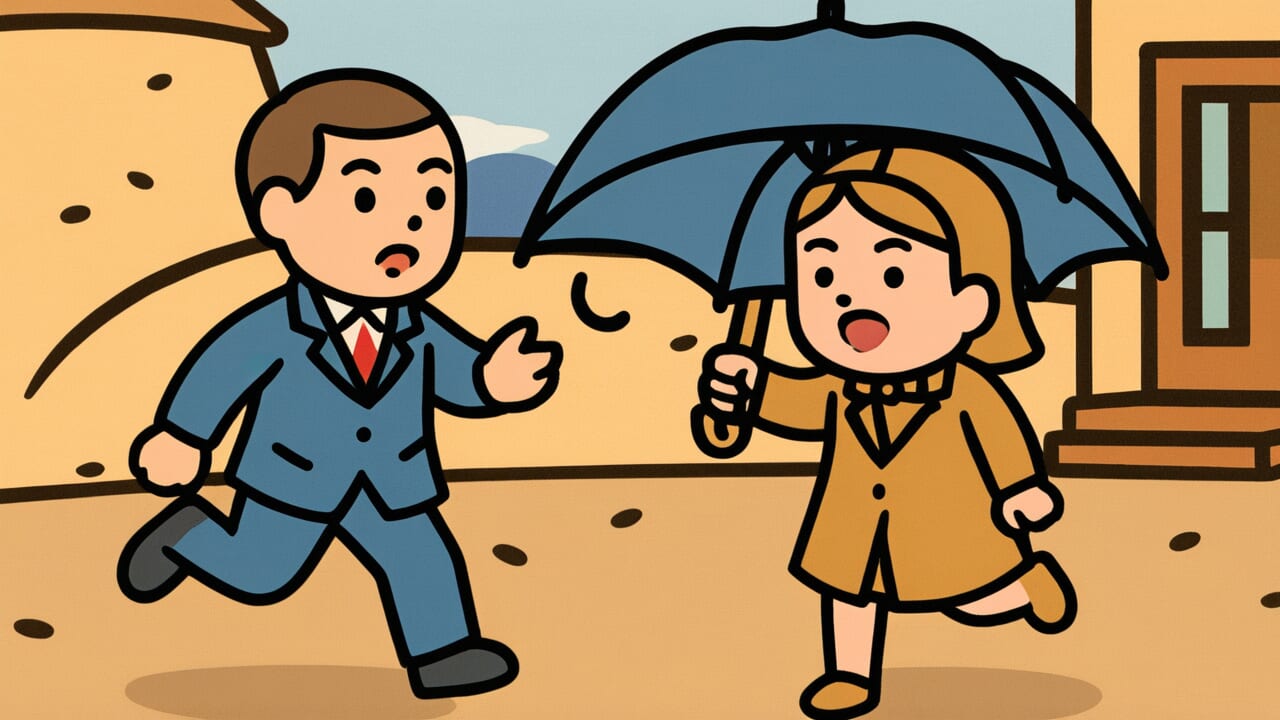How to Read “There is no hat to wear in a fight”
Kenka ni kaburu kasa wa nai
Meaning of “There is no hat to wear in a fight”
“There is no hat to wear in a fight” is a proverb that teaches us to avoid getting involved in conflicts. Just as wearing a hat serves no purpose in a fight, getting involved in conflicts itself is pointless.
This proverb is used when you see other people fighting or arguing. It’s also used when you’re about to get dragged into a conflict yourself.
People use it to stop someone from trying to mediate a dispute. They also use it to advise keeping distance from trouble.
The proverb warns that nothing good comes from sticking your nose into conflicts. In fact, you might end up getting hurt yourself.
Even in modern society, there are many conflicts better left alone. These include workplace faction fights and arguments on social media.
This proverb remains relevant today as wisdom for protecting yourself from unnecessary conflicts.
Origin and Etymology
No clear written records explain the origin of this proverb. However, we can make interesting observations from how the phrase is constructed.
Let’s focus on the expression “hat to wear.” During the Edo period, hats were essential items for avoiding rain and sunlight.
But in a fight, a hat doesn’t protect you at all. Instead, it blocks your vision and restricts your movement. It becomes a hindrance rather than help.
So “There is no hat to wear in a fight” likely came from this practical observation. Wearing a hat in a fight is completely meaningless.
The saying suggests a deeper meaning, though. Just as a hat is useless in a fight, participating in conflicts itself has no value.
Nobody puts on a hat to enter a fight. So it’s better not to approach fights in the first place. This life strategy is cleverly expressed through the image.
This proverb reflects the wisdom of our ancestors. They used an everyday item, the hat, to express the importance of avoiding unnecessary conflicts in common people’s lives during the Edo period.
Usage Examples
- The faction fight between my coworkers is getting intense, but there is no hat to wear in a fight, so I’ll stay out of it
- I was about to jump into their argument, but I remembered there is no hat to wear in a fight and kept quiet
Universal Wisdom
“There is no hat to wear in a fight” has been passed down for generations. This reflects deep insight into the essential nature of conflicts in human society.
Conflicts have a strange pull on people. We’re drawn to other people’s fights out of a sense of justice, curiosity, or sometimes just boredom.
But this proverb asks us calmly: Is this conflict really something you should be involved in?
In human society, someone somewhere is always fighting. There are differences of opinion, clashes of interests, and emotional tangles.
If we got involved in all of them, our lives would be consumed by nothing but conflict. Our ancestors understood the importance of knowing where to invest our limited time and energy.
This proverb doesn’t advocate cowardice or indifference. Rather, it shows the wisdom of discerning what truly matters in your life.
You don’t need to participate in every battle. The courage to choose which battles are worth fighting shows true strength.
There’s deep human understanding here. The choice not to fight is also a form of strength.
When AI Hears This
The fact that nobody joins a fight actually contains a paradox. The “always escapable state” makes fights harder to end.
In game theory, cutting off your own escape route is called “commitment.” For example, burning a bridge behind you shows you can’t retreat.
When opponents see this, they understand “this person is serious” and may yield. But in fights where nobody joins in, both sides keep an escape route open.
Strangely, this makes things worse. Each side expects “the other will back down first” and continues attacking.
This resembles a situation called the “chicken game.” Two cars drive toward each other head-on, and whoever turns first loses.
If both keep thinking “the other will avoid,” the worst collision happens. Fights work the same way.
Without supporters as a “forced termination device,” both sides pile up small attacks and sink into a quagmire.
The hat wasn’t just rain gear in the Edo period. It was also a tool to hide your face and temporarily shed your status and position.
In other words, it let you remove your “social face.” When nobody joins a fight, it tells the fighters: “Do what you want, but take responsibility yourself.”
Ironically, this removes the opportunity to end the conflict.
Lessons for Today
This proverb teaches modern people about freedom of choice in life. You have the right to choose which conflicts to engage with and which to avoid.
Modern society is an age of information overload. Open social media and controversies and conflicts from around the world flood your screen.
At work, at home, in communities, conflicts large and small happen every day. If you try to react to everything, comment on everything, and get involved in everything, you’ll exhaust yourself.
What matters is protecting your own peace of mind. The relationships you truly value, the principles you truly want to defend, the things you truly want to spend time on.
Develop the ability to discern these things. Choosing not to engage isn’t running away.
It’s an active decision to take back control of your own life.
Use the mental space created by withdrawing from unnecessary conflicts. Invest it in what truly matters to you.
That is the wise way of living this proverb teaches.



Comments